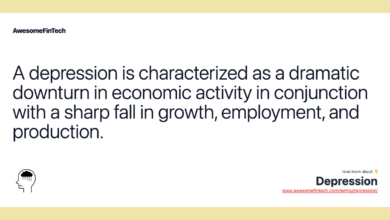
Economic Challenges Persist for Millions in US Recovery
Economic challenges persist for millions in US recovery, despite the country’s overall economic growth. While headlines may celebrate the return of jobs and a growing GDP, the reality on the ground is far more complex. Millions of Americans are still struggling to make ends meet, facing rising costs of living, stagnant wages, and limited access to healthcare and education.
This disparity highlights the persistent inequalities within the US economy, leaving many behind in the recovery.
The pandemic exacerbated existing economic vulnerabilities, leaving many individuals and families grappling with financial insecurity. The recovery has been uneven, with certain sectors booming while others struggle to regain their footing. This uneven recovery has resulted in a widening gap between the haves and have-nots, further fueling concerns about the long-term health and stability of the US economy.
Policy Solutions and Initiatives

The US economy has faced numerous challenges in recent years, with millions still struggling to recover. Policymakers have implemented various initiatives to address these challenges, but their effectiveness and impact remain a subject of ongoing debate. This section will delve into existing policies and initiatives, assess their effectiveness, and propose a potential policy solution that could help alleviate economic hardship.
Existing Policies and Initiatives
The US government has implemented a range of policies and initiatives aimed at addressing economic challenges, including:
- Fiscal Stimulus:The government has employed fiscal stimulus measures, such as tax cuts and increased government spending, to boost economic activity and create jobs. For example, the American Recovery and Reinvestment Act of 2009 aimed to stimulate the economy during the Great Recession.
- Monetary Policy:The Federal Reserve has implemented monetary policy measures, such as lowering interest rates and increasing the money supply, to encourage borrowing and spending. This has helped to keep interest rates low and stimulate economic growth.
- Job Training Programs:The government has funded various job training programs to equip individuals with the skills necessary for in-demand jobs. These programs aim to address unemployment and improve workforce productivity.
- Social Safety Net Programs:Programs such as unemployment insurance, food stamps, and Medicaid provide financial assistance and support to individuals and families facing economic hardship. These programs act as a safety net, preventing further hardship and promoting economic stability.
Effectiveness of Existing Policies and Initiatives
The effectiveness of these policies and initiatives has been a subject of debate. Some argue that fiscal stimulus measures have been successful in boosting economic growth and creating jobs, while others argue that they have led to increased government debt and have not been effective in addressing long-term economic challenges.
The effectiveness of monetary policy has also been debated, with some arguing that it has been successful in keeping interest rates low and stimulating economic growth, while others argue that it has led to asset bubbles and increased inequality.The effectiveness of job training programs and social safety net programs has also been debated.
The US economic recovery continues to be a bumpy ride for millions, with many struggling to make ends meet. While some sectors are booming, others remain stagnant, highlighting the uneven nature of the recovery. Adding another layer of complexity to the situation is the recent news that Senator Joe Manchin has joined forces with the GOP to oppose a private sector vaccine mandate, as reported in this article.
This move could further complicate the already delicate balance of public health and economic progress, leaving many to wonder about the future of the recovery.
Some argue that these programs have been successful in helping individuals find jobs and providing a safety net for those in need, while others argue that they have not been effective in addressing the underlying causes of economic hardship and have created disincentives to work.
Potential Policy Proposal
One potential policy proposal that could help alleviate economic challenges is a guaranteed basic income. This proposal would provide all citizens with a regular, unconditional cash payment, regardless of their employment status. Proponents argue that this would provide a safety net for those in need, reduce poverty and inequality, and stimulate economic activity.
“A guaranteed basic income is a policy that would provide all citizens with a regular, unconditional cash payment, regardless of their employment status.”
The effectiveness of a guaranteed basic income is still being debated, with some arguing that it would be an effective way to reduce poverty and inequality, while others argue that it would disincentivize work and lead to higher government spending.
While millions struggle with the ongoing economic challenges of the US recovery, a new controversy has emerged regarding the handling of classified documents. Republicans are accusing the National Archives of suppressing a statement about a document search related to Penn Biden, the president’s son, archives told to suppress statement on penn biden document search republicans say.
This political drama adds another layer of complexity to the already difficult economic landscape, raising questions about transparency and accountability at a time when many Americans are facing hardship.
Further research and pilot programs are needed to assess the potential benefits and drawbacks of this policy.
The Importance of Social Safety Nets

Social safety nets play a crucial role in supporting individuals and families during economic downturns. These programs, such as unemployment benefits and food assistance, provide essential resources to help people maintain their basic needs and navigate challenging economic periods.
Effectiveness of Social Safety Net Programs
The effectiveness of social safety net programs has been the subject of much debate. Proponents argue that these programs provide a vital lifeline to those who have lost their jobs or are struggling to make ends meet. They point to evidence that social safety nets can help to reduce poverty, improve health outcomes, and promote economic stability.
Opponents argue that social safety net programs can disincentivize work and create dependency. They contend that these programs can be costly and may not be effective in achieving their intended goals.
It’s disheartening to see the economic challenges persisting for millions in the US recovery, especially as we face issues like the rising cost of living and stagnant wages. This is further complicated by news like the recent lawsuit filed by Ohio’s Attorney General against Facebook, alleging violations of securities law and harm to children.
These legal battles highlight the complexities of our digital age and the need for robust regulations to protect consumers and ensure fair competition, all while working towards a more equitable economic future for everyone.
Potential Improvements to Social Safety Net Programs, Economic challenges persist for millions in us recovery
Despite the debate surrounding their effectiveness, there is broad consensus that social safety net programs can be improved. Potential improvements include:
- Simplifying the application process:The application process for many social safety net programs can be complex and time-consuming. Streamlining this process could make it easier for eligible individuals to access the benefits they need.
- Expanding access to benefits:Some social safety net programs have eligibility requirements that can exclude individuals who are in need. Expanding access to benefits could help to ensure that these programs reach those who need them most.
- Increasing the generosity of benefits:The amount of benefits provided by many social safety net programs is often insufficient to meet basic needs. Increasing the generosity of benefits could help to alleviate poverty and improve the lives of those who rely on these programs.
- Promoting work and self-sufficiency:Social safety net programs should be designed to promote work and self-sufficiency. This could include providing job training, education, and other support services that can help individuals find and keep employment.
The Path to Inclusive Economic Growth
Inclusive economic growth is a critical goal for a prosperous and equitable society. It signifies economic expansion that benefits all segments of society, leaving no one behind. This type of growth fosters a more just and sustainable economy by ensuring that everyone has the opportunity to participate and share in the benefits of economic progress.
Strategies for Promoting Inclusive Economic Growth
Strategies for promoting inclusive economic growth are crucial for achieving a more equitable and sustainable economy. These strategies encompass a range of approaches that aim to empower marginalized communities, foster entrepreneurship, and create a more level playing field for all.
- Investing in Human Capital:Education and skills development are fundamental to inclusive growth. Investing in quality education, vocational training, and lifelong learning opportunities empowers individuals with the skills they need to thrive in a changing economy. This includes ensuring access to education for all, regardless of background or circumstance.
- Promoting Entrepreneurship and Small and Medium-Sized Enterprises (SMEs):Entrepreneurship plays a vital role in job creation and economic dynamism. Supporting small and medium-sized enterprises (SMEs) through access to finance, mentorship, and business development programs can unlock their potential for growth and innovation, creating new opportunities for employment and wealth creation.
- Strengthening Social Safety Nets:Robust social safety nets provide a vital cushion for vulnerable populations, protecting them from economic shocks and ensuring basic needs are met. These nets can include unemployment insurance, social assistance programs, and affordable healthcare, allowing individuals to navigate challenging economic periods and build resilience.
- Promoting Diversity and Inclusion in the Workforce:Creating a more diverse and inclusive workforce is essential for tapping into the full potential of the talent pool. This involves addressing discrimination and promoting equal opportunities for all, regardless of gender, race, ethnicity, or disability.
- Investing in Infrastructure and Connectivity:Access to quality infrastructure, including transportation, energy, and communication networks, is crucial for economic development. Investing in these areas not only promotes economic activity but also creates jobs and opportunities for all segments of society.
Potential Barriers to Inclusive Economic Growth
While strategies for inclusive economic growth are crucial, several barriers can hinder progress and prevent everyone from benefiting equally.
- Inequality and Discrimination:Persistent inequalities based on factors like gender, race, ethnicity, and disability can create significant barriers to economic participation. Discrimination in hiring, education, and access to resources can limit opportunities for marginalized groups, perpetuating cycles of poverty.
- Lack of Access to Finance:Access to affordable credit and financial services is essential for individuals and businesses to thrive. Limited access to finance, particularly for marginalized communities and entrepreneurs, can hinder economic growth and opportunity.
- Limited Education and Skills:A lack of education and skills can create a significant barrier to economic participation. This is particularly true in rapidly changing economies where technological advancements demand a skilled workforce.
- Geographic Disparities:Geographic disparities, such as limited access to infrastructure, healthcare, and education in rural areas, can create significant barriers to economic opportunity for those living in these regions.
- Climate Change:Climate change poses a significant threat to economic development, particularly for vulnerable communities. Extreme weather events, rising sea levels, and environmental degradation can disrupt livelihoods, displace populations, and hinder economic progress.
Epilogue: Economic Challenges Persist For Millions In Us Recovery

Addressing the persistent economic challenges facing millions in the US recovery requires a multifaceted approach. It necessitates a combination of policy interventions, technological advancements, and social safety nets to ensure a more equitable and sustainable economic future. By prioritizing inclusive economic growth, investing in education and skills training, and strengthening social safety nets, we can work towards a future where everyone has the opportunity to thrive in the US economy.






